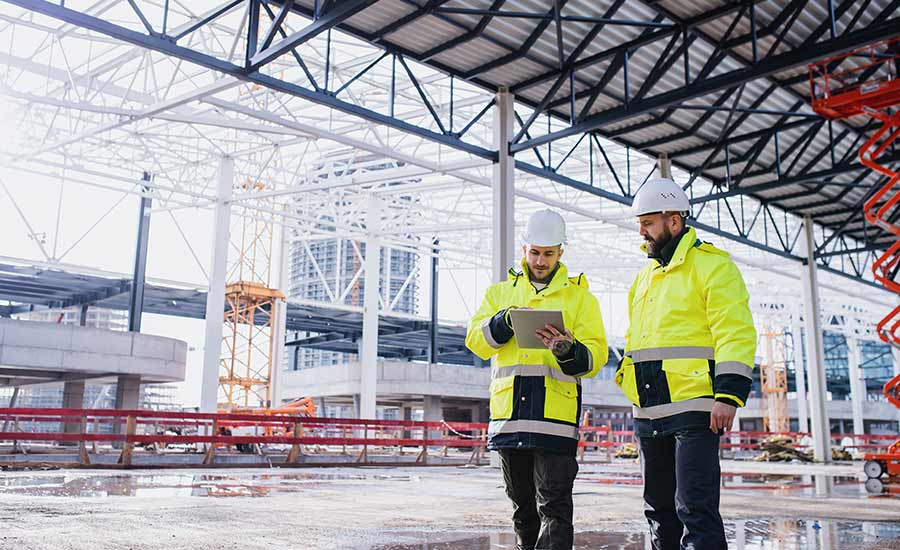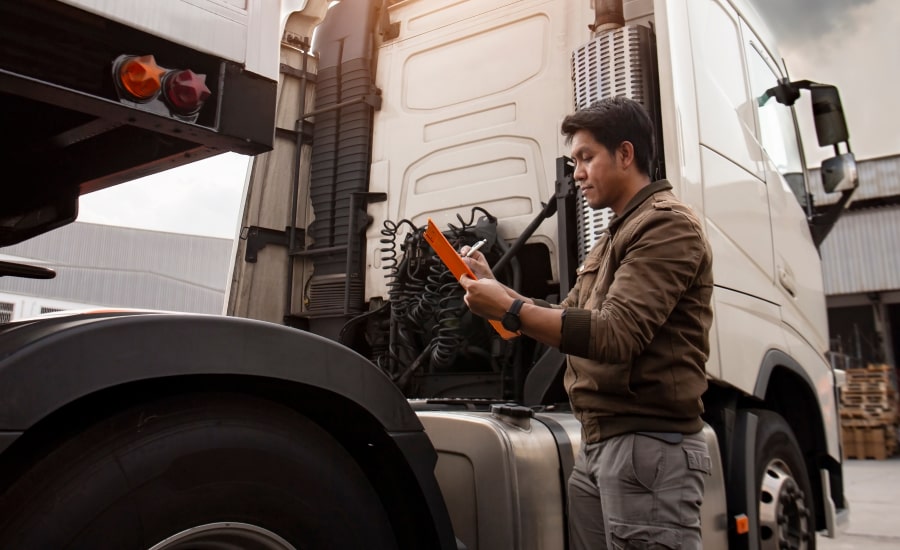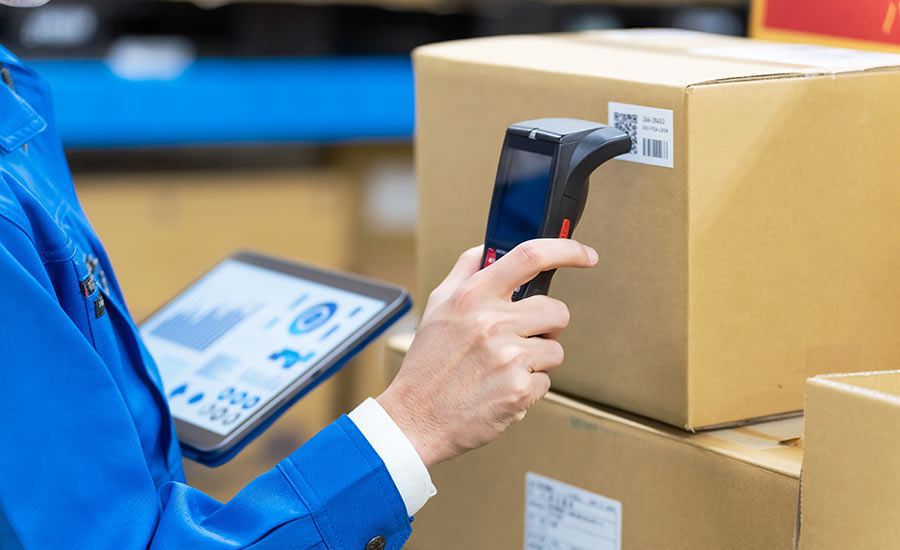
The fast-paced world of construction poses numerous challenges for business owners, from mitigating risks associated with hazardous conditions to fostering a culture of safety among workers.
Regular inspections that use detailed checklists can serve as a crucial tool in addressing these challenges.
Find out why it is important to have a construction site safety inspection checklist and what to include in it. Plus, we have created a free template that you can customize to reflect the safety requirements of your construction site.
Ready to create a construction site safety inspection checklist?
Try doForms For Free!
What Is A Construction Site Safety Inspection?
A construction site safety inspection thoroughly examines the site to identify potential hazards, unsafe conditions or practices that might cause accidents or harm to workers or visitors.
A construction site safety inspection assesses various aspects of the site, including work areas, equipment and machinery, fall protection systems, personal protective equipment (PPE) and handling of hazardous materials.
The purpose of a site safety inspection is to ensure compliance with safety regulations, prevent accidents and promote a safe working environment.
Check out how a safety inspection differs from a safety audit.
The Importance Of Construction Site Safety Inspection Checklists
Integrating checklists into safety inspections provides a systematic and structured approach for a detailed assessment.
Checklists provide a clear framework to guide inspectors through key safety checks, making the inspection more efficient and helping identify hazards early, leading to a safer construction site.
- Standardization: Safety inspection checklists provide a standardized framework for evaluating construction site safety across different projects and locations.
- Improved safety: Systematical identification and documentation of potential hazards and unsafe conditions helps address hazards proactively and minimize the risk of accidents, injuries and fatalities.
- Legal compliance: Checklists help construction companies stay compliant with safety regulations and standards.
- Training tool: Checklists can serve as a training tool for new inspectors. They help them understand safety protocols and procedures and ensure that inspections are conducted effectively.

Construction site safety inspection checklists improve safety, ensure legal compliance and serve as a training tool
What To Include In A Construction Site Safety Inspection Checklist
Construction site safety inspection checklists have several essential sections to assess safety and find areas that need improvement.
General Information
This section includes the inspector’s name, the location of the construction site and the date of the inspection. These details ensure accountability and traceability.
Working Environment
This section focuses on assessing the overall conditions of the construction site to maintain a safe working environment for all workers. Inspectors evaluate factors such as signage, lighting, ventilation and weather conditions.
By addressing these aspects, the checklist helps identify potential hazards and ensures proper measures are taken to reduce risks and promote safety.
Personal Protective Equipment
This section emphasizes the importance of PPE in preventing injuries and promoting worker safety on the construction site.
Inspectors check if workers have access to and are using head protection, body protection and fall protection equipment to keep them safe against workplace hazards.
Equipment & Machinery
This section evaluates the safety and functionality of the equipment and machinery on the construction site.
Inspectors review records, assess operational safety, check the condition of equipment components, verify proper use and training of operators and ensure safe storage and handling practices.
Examining these aspects helps identify potential equipment and machinery hazards to prevent accidents and injuries.
Emergency Equipment
This section assesses the accessibility of emergency resources and procedures on the construction site, aiming to respond promptly to emergencies and minimize the impact of accidents or incidents.
Inspectors verify the accessibility of first aid stations, fire extinguishers, emergency response plans, alarm systems and personal emergency devices.

Construction site safety inspection checklists include information about working environment, PPE equipment and machinery
Construction Site Safety Inspection Checklist [Free Template]
To help you promote a safer working environment for everyone involved in your construction project, we have compiled a construction site safety inspection checklist.
You can adjust, expand or modify it as needed so that it meets the specific requirements and conditions of your construction site.
General Information
- Include the date of the inspection.
- Include the inspector’s name.
- Include the location of the construction site.
Working Environment
- Check if debris, spills and clutter in walkways and work areas are properly managed to prevent slips, trips and falls.
- Verify the presence of safety signs, labels and warnings, including hazard warnings, emergency evacuation routes and site-specific instructions.
- Assess indoor and outdoor lighting on the construction site to ensure sufficient visibility for safe work activities — especially during early morning, late evening or nighttime work.
- Evaluate ventilation systems to ensure adequate airflow and proper circulation of fresh air — especially in enclosed spaces or areas where hazardous fumes or dust may accumulate.
- Consider weather-related factors such as temperature and wind speed and assess their potential impact on worker safety. For example, you may need to provide shelter or reschedule work activities in case of severe weather conditions.
Personal Protective Equipment
- Check if all workers wear hard hats or helmets to protect themselves against head injuries from falling objects or overhead hazards.
- Verify that workers use safety glasses, goggles or face shields to stay safe against flying debris, dust and chemicals.
- Confirm the availability and use of respiratory protection, such as dust masks and respirators in dusty or fume-filled environments.
- Check if workers wear suitable gloves for their specific tasks — for example, when handling sharp objects, chemicals or rough surfaces.
- Check if workers wear adequate footwear, such as steel-toed boots or shoes with slip-resistant soles, to protect against foot injuries, punctures or slips.
- Verify the use of high-visibility clothing or reflective vests to ensure protection from moving equipment or vehicles.
- Confirm the proper use of fall protection equipment, such as safety harnesses, self-retracting lifelines (SRLs) and shock-absorbing lanyards.
Equipment & Machinery
- Ensure equipment and machinery have up-to-date inspection and maintenance records.
- Verify that equipment and machinery are operated safely, including start-up/shut-down procedures, guarding mechanisms and emergency stop controls.
- Check equipment components for wear, damage or malfunction.
- Confirm that operators are trained and authorized to use specific equipment.
- Assess the storage and handling of equipment, tools and hazardous materials.
Emergency Equipment
- Ensure first aid kits, eye wash stations and emergency medical supplies are available and accessible.
- Verify that fire extinguishers are properly maintained and within easy reach.
- Review emergency response plans, including evacuation routes, assembly points and communication protocols.
- Practice various emergency scenarios.
- Test if the alarm systems are functioning.
- Ensure workers have access to personal emergency devices, such as whistles, radios or smartphones to communicate and signal in emergency situations.
Create Custom Construction Site Safety Inspection Checklists With doForms
As a cutting-edge mobile forms solution, doForms revolutionizes safety management in the construction industry by empowering businesses to create customized checklists and forms tailored to their specific needs.
Our intuitive platform allows you to effortlessly design digital forms that align with regulatory requirements and project specifications. Use the samples from our extensive library or build your own checklist from scratch with our mobile form builder.
doForms allows real-time data capturing from any location on any mobile device, which gives you instant access to inspection reports and insights. This, in turn, allows you to make proactive decisions and mitigate potential risks.
With doForms, you can include photos and videos in your inspection documents, enhancing clarity by providing visual context for safety hazards or compliance issues encountered during site assessments.
The flexibility of doForms allows you to adapt your inspection documents on-the-fly, accommodating changes in project scope, safety regulations or emerging safety concerns.
In addition to construction site safety inspection checklists, you can create other types of construction forms, such as:
- Construction daily reports
- Construction site preparation checklists
- Heavy equipment inspection checklists
- Waivers
Use doForms to improve your efficiency and promote a safer working environment on your construction site.
Ready to say goodbye to paper forms?
Try doForms For Free!
FAQs About Digital Construction Site Safety Inspection Checklists
If you are still hesitant about implementing digital construction site safety inspection checklists in your business, the FAQs below can help you make a decision.
How can a digital construction site safety inspection checklist improve efficiency?
Digital inspection checklists eliminate the need for manual data entry and paper storage, which saves time and minimizes the risk of errors. In addition, digital checklists enable real-time data capture which provides immediate insights into safety conditions and allows prompt corrective actions.
What features should I look for in a digital construction site safety inspection checklist app?
Look for features such as customizable checklist templates, offline functionality, photo and video capture capabilities, digital signatures and cloud storage. doForms offers all these to make your site safety inspection easy and efficient.
Can I customize digital inspection checklists to my specific project requirements?
Yes, doForms’ digital inspection checklists are highly customizable. They help you create tailored checklists based on your project specifications, regulatory requirements and industry standards. You can include specific items, tasks and criteria relevant to your construction site and safety protocols.




